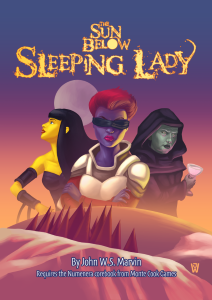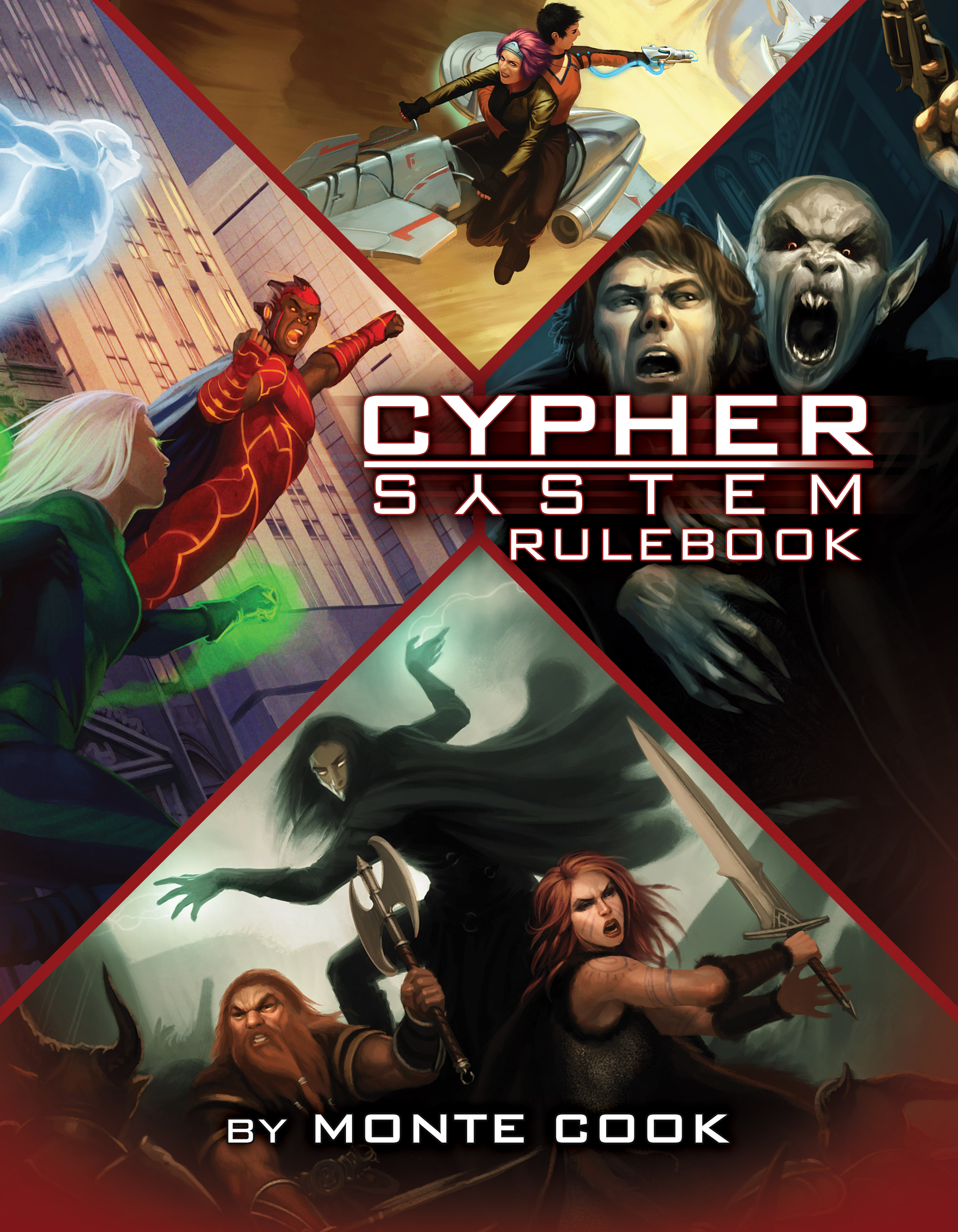
The Icon mechanic in 13th Age is one of the more interesting additions to a system that builds on your standard d20 game. The Icons can help, or hurt you, depending on the relationship you build with them. Each have different priorities and strong suits, and of course allies and enemies. Gods and Icons, from Dread Unicorn Games, builds on the existing world to add more flavor to the Icons.
The Icons are well fleshed out in the 13th Age core book, but Gods and Icons goes even further, giving the players and the GM the option to incorporate alternative icons that have clear analogues in the core book, but provides names and a much more expanded history for each. For example, The Dwarf King analogue is King Thorbal of the Glittering Gem. There are then examples of his politics, and a list of organizations operating under his purview. It also details his relationships with each of the other icons, and gives some ideas of variants that you could use to make King Thorbal slightly more unique in your game.
The one thing I like with each Icon page is that it also provides a list of gods that the Icon is associated with. I play a cleric in 13th Age, and I wanted a solid list of gods to grab onto and explore for building up my character. I’m incredibly bad at coming up with names on my own. So, the gods aspect of Gods and Icons is particularly useful for me.
Gods and Icons introduces three pantheons of gods, the Bright Gods, the Thirsty Gods, and the Old Gods. Each pantheon is based more on geography, though certain races are more likely to follow one pantheon then another. The book describes the gods in each pantheon, including the cults that follow them and their cultural impact. I think these small details can flesh out the world, and helps you build a believable culture in the game that your character is a part of. There’s also alternative names and variant rules for the gods, which also helps you make your world your own.
In addition to the new gods, there’s new domains for Clerics and new talents for Druids, Paladins, and Rangers to go along with the new pantheons. For example, your Druid can take Blessing of the Sparrow, giving you a bit of mischief to your magic. There is also a list of new locations, holy sites and unhallowed grounds related to the gods for your players to explore.
In addition to expanding the world of 13th Age with both gods and Icons, this supplement lists new items to give to your players based on Icon rolls. What’s really cool is they include tables, that are divided up by class for you to roll on to decide what items to hand out. And even more, you can decide if you want to give a useful item, in which case only a few items in the table will be in the pool you roll for. If instead you want to truly randomly hand out the loot more options are available. The tables you end up with include loot from the core book, 13 True Ways, and the Gods and Icons book.
The last additional worldbuilding included in the book are new races and NPC appearance tables. These tables can help you randomly decide on a race, gender, icon, and quirk for each of your NPCs. The new races give your players a lot more options on what they want to play – I didn’t even know half-owlbear was a thing. A few of the other options include Dhampir, Goblin, and of course, Gelatinous Troglodyte. I want to see an adventuring part with one of those guys!
Gods and Icons also has a Player’s Guide version that you can give to your group. This includes most of the same information, excluding the loot tables and the locations. There is also an introductory adventure available, called Towers in the Mist, which includes pre-generated characters and helpful hints to GMs running 13th Age for the first time. This includes suggestions on boons from Icon Relationship rolls and how to present them, which should give the GM an idea of ways to frame such interactions in the future. Like with Sleeping Lady, another Dread Unicorn release, the adventure gives the GM ideas on how to alter it depending the number of players and experience they have with RPGs, something even somewhat experienced GMs can lack confidence in doing for the first time.
Overall, if you’re looking to make your campaign of 13th Age a little more expansive, I would highly recommend picking up Gods and Icons. Even if you’re not quite at that stage yet, I think Tower in the Mist is a great introductory adventure, for both the players and the GM.
Gods and Icons is available on DriveThruRPG for $14.95 as a PDF, or $29.95 as a softcovered book. The Players Guide is $9.95, and The Tower in the Mist is $4.95. If you want all three, you can purchase them as a bundle for only $18.45.
*The Redacted Files received a free copies of these supplements for review purposes.










 of any level. Monster stats are modified by the level of the party, so that the GM doesn’t have to put a lot of work into sorting out altering the difficulty of an encounter themselves. There are also instructions on building up crowds of minions, called mooks here, to swarm up on your characters. They provide different ways to create your mooks so that they can last just a little longer. I really like the way they developed this idea for Numenera and think it would be great to adapt to my own games.
of any level. Monster stats are modified by the level of the party, so that the GM doesn’t have to put a lot of work into sorting out altering the difficulty of an encounter themselves. There are also instructions on building up crowds of minions, called mooks here, to swarm up on your characters. They provide different ways to create your mooks so that they can last just a little longer. I really like the way they developed this idea for Numenera and think it would be great to adapt to my own games. The adventure begins with the party getting a plea to help save the city of Bursang, part of The Sun Below. However, the situation is more complicated then has yet been realized, and the fate of the Ninth World will end up in the hands of the party. This is a nice and neat campaign, and there are several possible ways for the PCs to try to save the world. The easily modifiable levels of difficulty come in handy with this, as neither you as the GM or the creators of the scenario can predict in what order the party will choose to attack.
The adventure begins with the party getting a plea to help save the city of Bursang, part of The Sun Below. However, the situation is more complicated then has yet been realized, and the fate of the Ninth World will end up in the hands of the party. This is a nice and neat campaign, and there are several possible ways for the PCs to try to save the world. The easily modifiable levels of difficulty come in handy with this, as neither you as the GM or the creators of the scenario can predict in what order the party will choose to attack. as you read through it for want to do as a GM. I think this can be great, especially for GMs who are unsure of themselves. The layout is in the same style as the other Numenera books, which makes it easy to recognize when they’re pointing out things like GM intrusions. There are some points were it is a little harder to follow, but for the most part flows very smoothly. There is a lot more art then I was expecting, and it really illustrates the creatures and characters you meet throughout the adventure well.
as you read through it for want to do as a GM. I think this can be great, especially for GMs who are unsure of themselves. The layout is in the same style as the other Numenera books, which makes it easy to recognize when they’re pointing out things like GM intrusions. There are some points were it is a little harder to follow, but for the most part flows very smoothly. There is a lot more art then I was expecting, and it really illustrates the creatures and characters you meet throughout the adventure well.

 process of character creation through the selection of descriptor, type and focus: the adjective, noun and verb of the statement, “I am a ______ ______ who ______.” The Cypher System also adds a new concept – flavors. You can add a flavor to your type and get some new options for your character to pull from. The flavors include Technology, Magic, Combat, Stealth, and Skills/Knowledge. These let you customize your character a little more, like if you want a talk-y character who is also really good at punching people.
process of character creation through the selection of descriptor, type and focus: the adjective, noun and verb of the statement, “I am a ______ ______ who ______.” The Cypher System also adds a new concept – flavors. You can add a flavor to your type and get some new options for your character to pull from. The flavors include Technology, Magic, Combat, Stealth, and Skills/Knowledge. These let you customize your character a little more, like if you want a talk-y character who is also really good at punching people.
